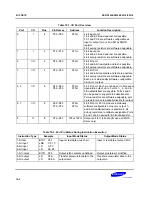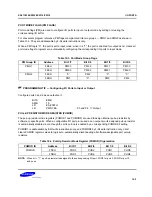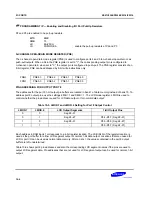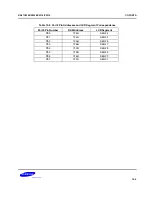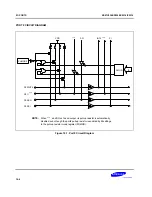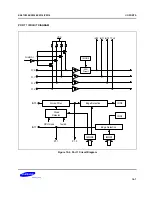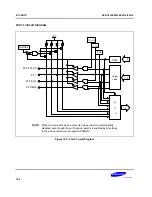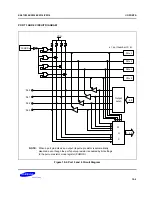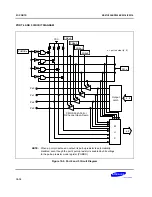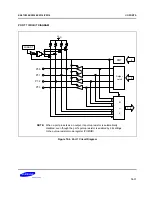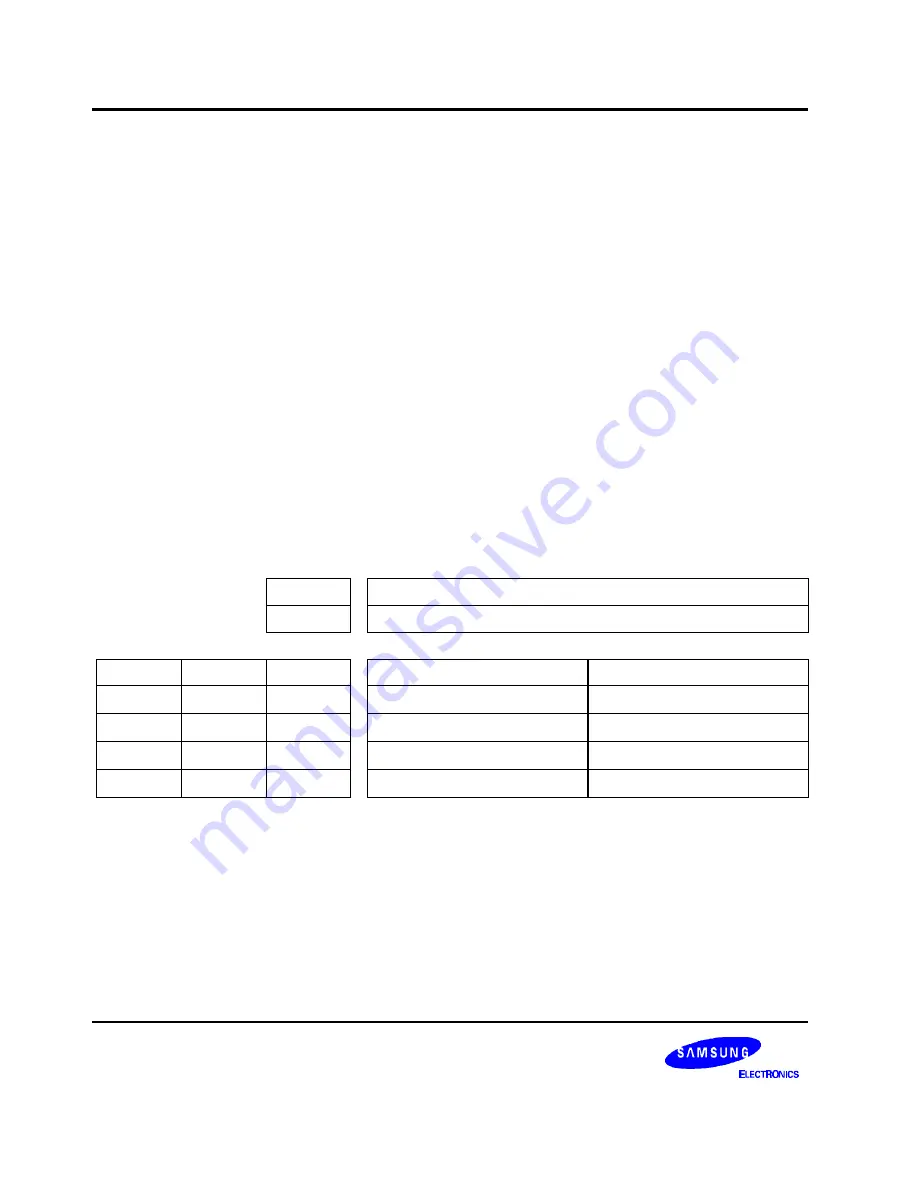
TIMERS and TIMER/COUNTERS
KS57C2308/P2308/C2316/P2316
11-4
BASIC TIMER MODE REGISTER (BMOD)
The basic timer mode register, BMOD, is a 4-bit write-only register. Bit 3, the basic timer start control bit, is also
1-bit addressable. All BMOD values are set to logic zero following
RESET
and interrupt request signal generation
is set to the longest interval. (BT counter operation cannot be stopped.) BMOD settings have the following
effects:
— Restart the basic timer;
— Control the frequency of clock signal input to the basic timer;
— Determine time interval required for clock oscillation to stabilize following the release of stop mode by an
interrupt.
By loading different values into the BMOD register, you can dynamically modify the basic timer clock frequency
during program execution. Four BT frequencies, ranging from fxx/2
12
to fxx/2
5
, are selectable. Since BMOD's
reset value is logic zero, the default clock frequency setting is fxx/2
12
.
The most significant bit of the BMOD register, BMOD.3, is used to restart the basic timer. When BMOD.3 is set
to logic one (enabled) by a 1-bit write instruction, the contents of the BT counter register (BCNT) and the BT
interrupt request flag (IRQB) are both cleared to logic zero, and timer operation is restarted.
The combination of bit settings in the remaining three registers — BMOD.2, BMOD.1, and BMOD.0 —
determines the clock input frequency and oscillation stabilization interval.
Table 11-2. Basic Timer Mode Register (BMOD) Organization
BMOD.3
Basic Timer Restart Bit
1
Restart basic timer; clear IRQB, BCNT, and BMOD.3 to "0"
BMOD.2
BMOD.1
BMOD.0
Basic Timer Input Clock
Interval Time
0
0
0
fxx/2
12
(1.02 kHz)
2
20
/fxx (250 ms)
0
1
1
fxx/2
9
(8.18 kHz)
2
17
/fxx (31.3 ms)
1
0
1
fxx/2
7
(32.7 kHz)
2
15
/fxx (7.82 ms)
1
1
1
fxx/2
5
(131 kHz)
2
13
/fxx (1.95 ms)
NOTES
:
1.
Clock frequencies and stabilization intervals assume a system oscillator clock frequency (fxx) of 4.19 MHz.
2.
fxx = selected system clock frequency.
3.
Oscillation stabilization time is the time required to stabilize clock signal oscillation after stop mode is released. The
data in the table column “Oscillation Stabilization” can also be interpreted as "Interrupt Interval Time."
4.
The standard stabilization time for system clock oscillation following a
RESET
is 31.3 ms at 4.19 MHz.
Summary of Contents for C2316
Page 30: ...ADDRESS SPACES KS57C2308 P2308 C2316 P2316 2 22 NOTES ...
Page 168: ...SAM47 INSTRUCTION SET KS57C2308 P2308 C2316 P2316 5 94 NOTES ...
Page 170: ......
Page 206: ...POWER DOWN KS57C2308 P2308 C2316 P2316 8 8 NOTES ...
Page 210: ...RESET KS57C2308 P2308 C2316 P2316 9 4 NOTES ...
Page 222: ...I O PORTS KS57C2308 P2308 C2316 P2316 10 12 NOTES ...
Page 272: ...LCD CONTROLLER DRIVER KS57C2308 P2308 C2316 P2316 12 24 NOTES ...
Page 280: ...SERIAL I O INTERFACE KS57C2308 P2308 C2316 P2316 13 8 NOTES ...
Page 294: ...MECHANICAL DATA KS57C2308 P2308 C2316 P2316 15 2 NOTES ...
Page 310: ...KS57P2308 P2316 OTP KS57C2308 P2308 C2316 P2316 16 16 NOTES ...
Page 318: ......
Page 320: ......
Page 322: ......
Page 325: ......
Page 327: ......

